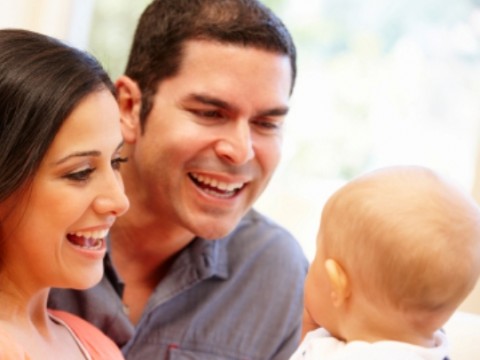Scientists tested 180 babies, born to English-speaking parents, at 4 months, 6 months, 10 months and 12 months old. They showed the babies a video of a woman speaking in English or Spanish. The researchers found that when the woman spoke English, 4 month olds looked at her eyes. The 6-month-old babies looked at her eyes and mouth equally. The 8 and 10 month olds primarily gazed at her mouth. By 12 months old, the babies’ attentions shifted back to the woman’s eyes.
The researchers suggest that by 12 months, babies are producing their first words, so they have mastered the structures and sounds of their parents’ languages. They don’t need to read lips, so they use their eyes to learn social meanings behind words. The eyes tell us what the other person is thinking, what they want and what they desire.

Interestingly, when the woman spoke Spanish, the 12 month olds who were used to hearing English at home stared at her mouth longer, just like the younger babies. They read her lips to help decipher the unfamiliar sounds the woman made.
Although more research is needed to expand these findings to developmental disorders, research say the results from this study can help with early diagnosis of autism spectrum disorders. Two year olds with autism pay more attention to speakers’ mouths, so this research might make it possible to diagnose autistic children earlier ““ maybe as early as 12, 13 or 14 months.